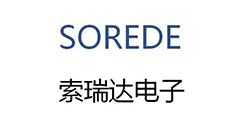What Are the Basic Parameters of Inductors?

What Are the Basic Parameters of inductors?

The main parameters include factor, inductance, capacitance, etc. In this article, SOREDE will provide a detailed introduction.
Inductance
Inductance, also known as the self-inductance coefficient, is a physical quantity that represents the self induction ability of the inductor.
The inductance of inductor mainly depends on the number of coils (turns), winding method, whether there is magnetic core, and the material of the magnetic core. Generally, the more the number of coils and the denser the coils, the greater the inductance. The inductance of a coil with a magnetic core is larger than that of a coil without a core, and the greater the permeability of the core, the greater the inductance.
The basic unit of inductance is Henry (Henley for short), which is represented by the letter "H". The commonly used units are millihenge (MH) and microhenge (μh)
1H=1000mH
1mH=1000μH
Allowable deviation
The allowable deviation refers to the allowable error between the nominal inductance on the inductor and the actual inductance.
Generally, inductors used in oscillation or filtering circuits require high accuracy, with an allowable deviation of ± 0.2% ~ ± 0.5%; while the inductors used for coupling and high frequency resistance current are not required with high accuracy, and the allowable deviation is ± 10% ~ 15%.
Quality factor, also known as Q value or merit value, is the main parameter to measure the quality of the inductor.
It refers to the ratio of inductance and equivalent loss resistance of the inductor when it works at a certain frequency AC voltage. The higher the Q value of the inductor, the smaller the loss and the higher the efficiency.
The quality factor of the inductor is related to the DC resistance of the coil conductor, the dielectric loss of the coil frame, and the loss caused by the core and shield.
Distributed capacitance refers to the capacitance between turns, between coil and core, between coil and ground, between coil and metal. The smaller the distributed capacitance, the better the stability. Distributed capacitance can increase the equivalent energy dissipation resistance and quality factor. To reduce the distributed capacitance, it is commonly used to use wire wrapped or multi strand enameled wire, and sometimes the honeycomb winding method is also used.
Rated Current
Rated current refers to the maximum current value that the inductor can bear under the allowable working environment. If the working current exceeds the rated current, the inductor will change its performance parameters due to heating and even burn out due to over-current.
- +1 Like
- Add to Favorites
Recommend
- Inductors, Air Core Inductors and Baluns
- SGTE Launched Automotive Grade High Current Integrated Inductors GHFV, with Smaller Volume and Stable Impedance
- AiT Offers Compact SMD Power Inductors Available in SMD Size Range from 0602 to 1812
- CCM Series | Axial Leaded Inductors with Phenolic Core, Available with ±10%, ±20% Inductance Tolerance
- ABC ATEC: Premier Manufacturer Of High-Quality Power Inductors
- Shielded Surface Mount Power Inductors for Automotive Applications
- Eaton authorizes Sekorm to distribute inductors, fuses, TVS tubes, super capacitors, power modules and other products
- Do You Know the Structure of the Inductor?
This document is provided by Sekorm Platform for VIP exclusive service. The copyright is owned by Sekorm. Without authorization, any medias, websites or individual are not allowed to reprint. When authorizing the reprint, the link of www.sekorm.com must be indicated.





























































































































































































































































































































































































































































































































































































































































































































































































































































































